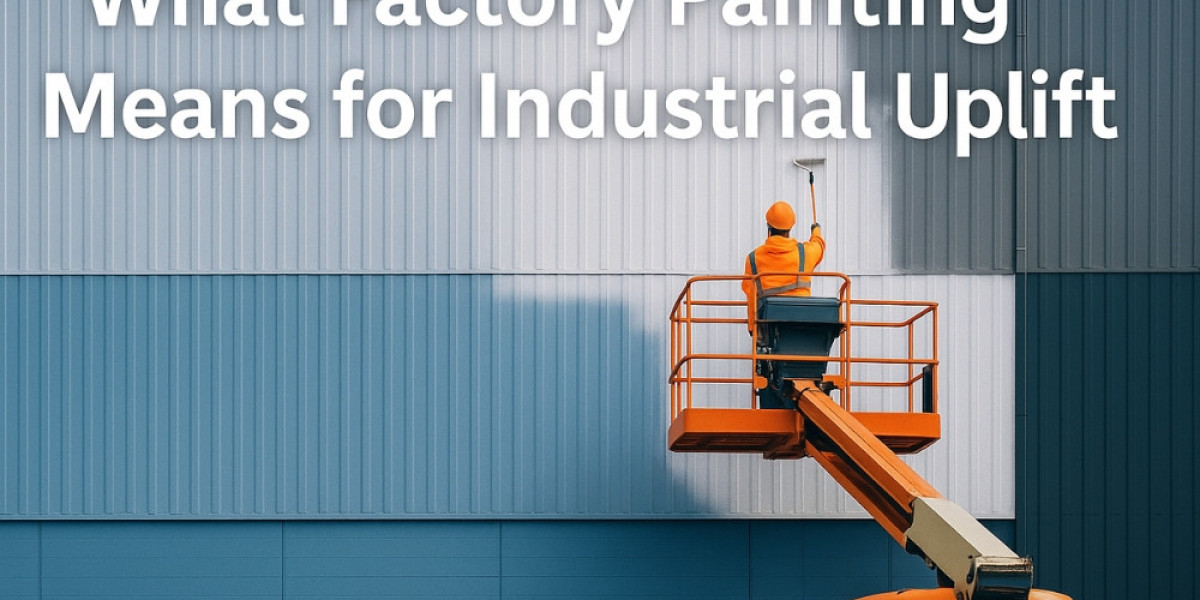At first glance, factory painting might seem like a purely cosmetic exercise — a quick coat to brighten dull concrete walls or mask grime. But any facility manager who’s dealt with flaking paint, rusting steel, or regulatory fines knows: it’s more than surface deep. From my own experience working with industrial sites in Western Sydney, I’ve seen how a quality painting job can transform not just the look of a factory, but its safety rating, compliance score, and even workforce morale. That’s why many operations teams opt for factory painting services tailored to meet the demands of high-traffic, regulation-heavy environments. These services go beyond brushes and rollers, incorporating planning, surface testing, specialised coatings, and compliance checklists designed for operational conditions. Beyond the functional, there’s a strategic reason to repaint: brand perception. A freshly painted facility signals to partners, clients, and auditors that your operations are professional, current, and compliant. Whether it's a supplier dropping off goods or an insurance rep doing a site visit, appearances matter — especially when tied to operational risk. Industrial uplift isn’t just about new machines or logistics software. Sometimes, it starts with the walls.
Common problems that industrial paint jobs can prevent
If you've walked through an ageing warehouse, you've likely noticed at least one of these hazards:
Peeling paint over machinery or vents — often hiding corrosion
Slippery walkways — lacking non-slip coatings
Unreadable safety lines or markings — compromising traffic and workflow
Contaminated surfaces — where old paint traps dust, grease, or even asbestos
Each of these issues isn’t just an eyesore. They introduce real-world risks to safety, efficiency, and compliance. A well-executed paint strategy helps mitigate them. I once visited a warehouse where the emergency exit markings were so faded they blended into the floor. Staff didn’t even know where to go during drills. A proper industrial paint job fixed that — with high-contrast, durable line markings, the confusion disappeared.
Compliance isn't optional
Every commercial paint job must align with current workplace health and safety standards, especially in factories handling heavy machinery or hazardous chemicals. Business owners must ensure that every inch of their facility, from floors to walls, meets safe work conditions.
That includes:
Non-slip coatings on high-traffic floors
Clear visibility of safety demarcations
Low-VOC or non-toxic paint selections
Adequate surface prep to ensure coatings don’t fail mid-operation
One of my clients, a food-grade plastics manufacturer, was caught off guard by an unannounced audit. Their facility passed with flying colours, not because it was spotless, but because every painted surface complied with WHS standards. Their investment in factory painting paid off tenfold in avoided downtime and penalties.
It’s also worth noting that these standards are not static — regulations shift, and what was compliant five years ago might not be now. Regular painting updates are part of a forward-thinking WHS plan.
From prep to primer: Why the process matters
It’s tempting to jump straight into painting, especially during tight shutdown windows. But without proper preparation, even the best coatings will blister, peel, or fail prematurely. I’ve seen shortcuts firsthand. In one case, a contract crew skipped degreasing a steel mezzanine, assuming the paint's adhesion promoter would “handle it.” It didn’t — within weeks, flakes were peeling like old wallpaper. That’s why experienced teams focus on proven painting preparation methods. These typically include:
Surface assessment — moisture, temperature, contaminants
Degreasing and decontamination
Mechanical abrasion or blasting
Primer compatibility testing
Neglecting these steps doesn’t just shorten the life of the paint — it can create dangerous slip hazards or hide structural faults. One particularly tricky job involved a warehouse that previously used an oil-based floor sealer. We had to use a specialised degreaser, followed by diamond grinding to roughen the surface, just to get the new epoxy to stick. It took extra time, but the coating is still going strong five years later.
How to choose the right industrial paint team
Picking a factory painting provider isn’t just about price or proximity. Here’s what to look for:
Experience in your industry (food, metalworks, logistics, etc.)
Detailed prep and coatings plan tailored to your environment
Awareness of local WHS obligations
Willingness to work around your schedule, including off-peak hours
A documented inspection process before and after completion
When we worked on a distribution warehouse in Wetherill Park, the facility manager made us walk through every corner of their workflow to plan the safest timing for our work. The result? Zero disruptions. Zero callbacks.
A good team should also walk you through product options — do you need UV resistance? Chemical resilience? Or just better light reflection in low-light zones? These details affect everything from coating choice to lifespan.
Why a fresh coat is an upgrade, not a band-aid
Factory painting is often thought of as a patch job — cover the cracks and carry on. But when done right, it’s a business upgrade. It extends the life of your infrastructure, ensures a safer environment for staff, and communicates professionalism to clients, auditors, and investors alike. It’s also a signal to your workforce. Employees notice when their environment is maintained. One supervisor told me, “When they saw the floors done and lines repainted, it made everyone lift their game.” Think of it like servicing equipment: it might not generate revenue directly, but when neglected, it absolutely eats into profits. Investing in professional painting means fewer interruptions, fewer hazards, and less long-term cost.
Final thoughts: factory painting as risk reduction
Paint isn’t a luxury in industrial spaces. It’s part of your risk management strategy — just like insurance, training, or regular machinery servicing. So, the next time you walk through your facility and think “we should repaint this place,” remember: it’s not just about looks. It’s about performance, protection, and planning for the future. If you're unsure where to begin, start with a walkthrough — look at your floors, your exits, and your loading zones. Chances are, they’re telling a story that a coat of paint could rewrite.
And remember, factory painting doesn’t need to be disruptive. With the right contractor, staging, and materials, you can have coatings applied overnight, during off-peak hours, or even section by section. It’s not a one-size-fits-all process. The goal isn’t just to coat surfaces — it’s to upgrade how your business functions, looks, and performs in the long run. Good painting is a good operations strategy. If you're treating factory painting as an afterthought, you're missing the bigger picture. Treat it like the strategic decision it is. Budget for it. Plan it. And most importantly, make it part of your operations improvement roadmap.










